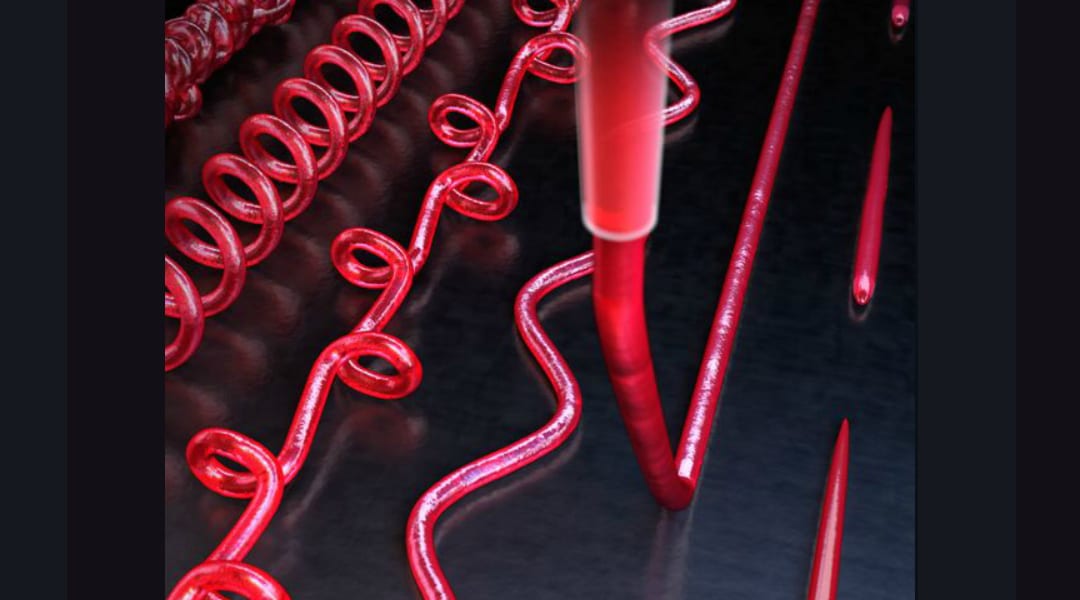Direct ink writing is a revolutionary additive manufacturing technique, in which a filament of a paste (known as an “ink”) is extruded from a small nozzle while it is moved across a platform. The method, which is over 20 years old, has hitherto demonstrated great potential in a variety of fields ranging from electronics and robotics to biomedical implants.
Despite its versatility, two major issues have hindered its widespread use: a) the ink thickness and style, which has so far been predefined by the size of the nozzle and its path, impeding 3D printing under varying conditions, and b) the trial-and-error approach researchers have used to select the printing conditions.

DIW 3D printing of viscoelastic inks. More information here.
In response to these issues, in a study published in Advanced Materials, researchers from MIT, devised a strategy that achieves printing resolution beyond the nozzle size, drawing diverse complex patterns with a linear nozzle path under a protocol of well-defined criteria. Experimenting with the different parameters of speed and distance of the nozzle from the substrate along a linear path, Dr. Hyunwoo Yuk and Prof. Xuanhe Zhao succeeded in obtaining continuous printing sequences of varying fiber diameters and patterns.
To rationally select the printing parameters, they constructed a phase diagram that allowed them to quantitatively identify the safe regimes of operation, thereby minimizing deformation, instabilities and fracture of the viscoelastic ink. As a proof of concept, they designed stretchable 3D structures with tunable stiffening with gradient and programmable swelling properties, all printed with a single nozzle.
The reseachers state, “In this study, we report a new strategy to exceed the limits of DIW 3D-printing by harnessing deformation, instability, and fracture of the viscoelastic ink. The new strategy allows for […] reproducible printing of inks in a diverse range of resolution and patterns, using a single nozzle and ink materials. The current work is a great example to show that the mechanics of inks play a critical role in the development of 3D-printing technology.”

















